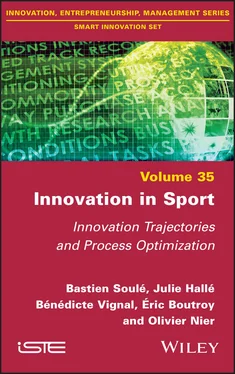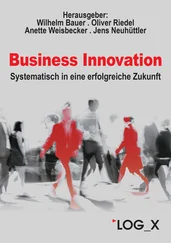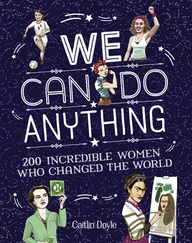1.2.3. Co-creating value: the consumer at the heart of innovation
The participation of users in innovative processes is an important factor in the success of an innovation, particularly during the ideation, testing (concept, prototype) and marketing phases (Gatignon et al . 2016). The various forms of open innovation that we have just described also refer to a certain heterogeneity of terms: depending on the case, we speak of involvement, participation or even co-production.
A more recent paradigm – value co-creation (VCC) – is also interested in these interactions between companies and consumers but goes further in recognizing the active role of the latter (Vargo and Lusch 2004, 2008). This approach reverses the classical perspectives to postulate that value is generated not by companies (which only make value propositions), but by consumers during their participation and then use. An organization therefore becomes co-creative if it reinforces its interactions with users, in order to foster the iterative emergence of value-generating propositions for end users (Grönroos 2011). Interactions do not aim to change the consumer, but on the contrary to transform the company.
Although VCC is receiving increasing attention in sports, it has not been used in the context of innovation case studies. However, in an indirect way, most of the work focuses on the co-creation of value around novelties. Kolyperas et al . (2019) synthesized how fans (understood as engaged consumers) determine the value of propositions (e.g. “GoPro Be a Hero”, through users’ productions, narratives and broadcasts). According to them, this is done through operations of evaluation (role of assimilator), creation (role of adapter) and positioning (role of authenticator). These mechanisms very often move value propositions “in directions that were not foreseen or explored by the brand itself” (Kolyperas et al . 2019, p. 213). These elements confirm, if necessary, that the value of an innovation cannot be defined a priori by the providers but is constantly redefined a posteriori and in a contextualized manner by consumers.
Fostering consumer-centric interactive approaches should not be idealized as it does not protect against a symmetrical phenomenon of value co-destruction through misuse (Plé and Chumpitaz Cáceres 2010), resistance (fan protests in sports shows, see (Stieler et al . 2014)), or loss of value for other stakeholders. Boutroy and Bodet (2017) showed, for example, how an innovation process based on a strong co-creative approach adopted by a sports goods manufacturer (relying on its fan community) failed to succeed owing to the co-destruction of value for ordinary consumers as much as for intermediaries. Focusing on the Nike Run Club mobile sports app, Charitsis et al . (2018) also show that the co-creator of value can be somewhat unknowingly co-creative, as the data harvested on their physical activity is subject to secondary use by the producers of these apps.
In this respect, it remains important to move beyond the company-consumer dyad to take into account all interacting stakeholders (Woratschek et al . 2014), relying in particular on the notion of stakeholder network, as Grohs et al . (2020) 3did in the case of sports events.
KEY POINTS – The contrast with classical approaches to innovation is significant. Von Hippel and his colleagues take the opposite stance on the still widespread view that innovation comes exclusively from industry and its entrepreneurs, from the identification of markets to the propagation of novelty. The LUT makes it possible to highlight the importance of more ordinary actors on the periphery of productive systems by taking into account the role of users (described as growing, to the point of evoking a “democratization of innovation”). However, it is important not to misunderstand the main interest of this inverted model of innovation: it is true that lead users occasionally take the place of industrialists; but in a more structural way, they provide them with valuable information about expert uses, without which many industrially produced innovations would not see the light of day or would prove to be out of step with the needs emerging from the field. Finally, one may wonder whether the LUT does not stimulate more reflection on ideation and invention than on innovation as a whole. The increasing attention paid to different forms of open innovation signals a desire on the part of companies to integrate consumers as actors of creativity. This may involve encouraging interactions with different categories of users (user-driven approach), or even making the company a simple facilitator of the co-creation of value by consumers (VCC). These elements open up the possibility of substituting the top-down innovation scheme with a more bottom-up conception with the LUT, or even more horizontal and whirling in other cases (Gaglio 2011).
THE LIMITS OF THESE APPROACHES – While this approach has led to decisive advances, it leaves some questions unanswered. By emphasizing the primary role of lead users, the proponents of the LUT sometimes come to underestimate the structuring role of the traditional actors of innovation (companies, laboratories, etc.). In a way, they reactivate a new incarnation of the heroic figure (the lead users, the communities of practitioners resemble the “disinterested enthusiast” of the mythology of innovation analyzed by (Callon 1994)), which displaces, rather than overcomes, the emphasis placed on a central actor in the innovation process. The role and objectives of the users appear to be quite heterogeneous, just like the forms of relations that are established with the manufacturers and their representatives. Some of the innovations described are in fact similar to “simple” customizations, which are, after all, quite classic in the phase of appropriation of serial equipment or material. Open innovation is certainly part of a more egalitarian dyadic relationship between companies and users, but it is not a miracle solution. There are many consumers and their needs are evolving. What’s more, listening too much to certain users can destroy value for other users and even other stakeholders. Innovation is a collective activity that requires going beyond the organization-consumer dyad to take into account the wider network of actors who will support it, as well as the many material and technical elements that will influence the fate of a new product.
1.3. The socio-technical approach to innovation: networks and attachment
The socio-technical analysis of innovations makes it possible to enrich the previous contributions, in particular by going beyond the overly pronounced focus on certain components of the systems: the entrepreneur, the technical object, the user, etc. According to this relational approach, the success of an innovation depends above all on the progressive construction of a network of stakeholders who will support it and give it substance. It is therefore understandable that the central issue becomes recruiting allies, identifying their expectations and translating the project in such a way as to interest them (Akrich et al . 1988a, 2006). The originality of this point of view is summed up in the following statement, which is rather iconoclastic with regard to the usual sacralization of the inventor: the fate of an innovation does not depend so much on the intrinsic qualities of the idea or the object conceived as on the solidity and breadth of the chain that will support it. Innovating therefore consists of building and maintaining a chain of association that is increasingly extended, solid and stable, by attracting and recruiting new actors. Kline and Rosenberg (1986) develop a vision of innovation as an interactive process, or chain-linked model, compatible with the socio-technical approach. The consensus that has gradually taken hold in the academic sphere around this collective and systemic understanding of innovation has not prevented institutions responsible for innovation policies from maintaining approaches that are too linear and/or focused on a few key actors (Joly 2019).
Читать дальше












